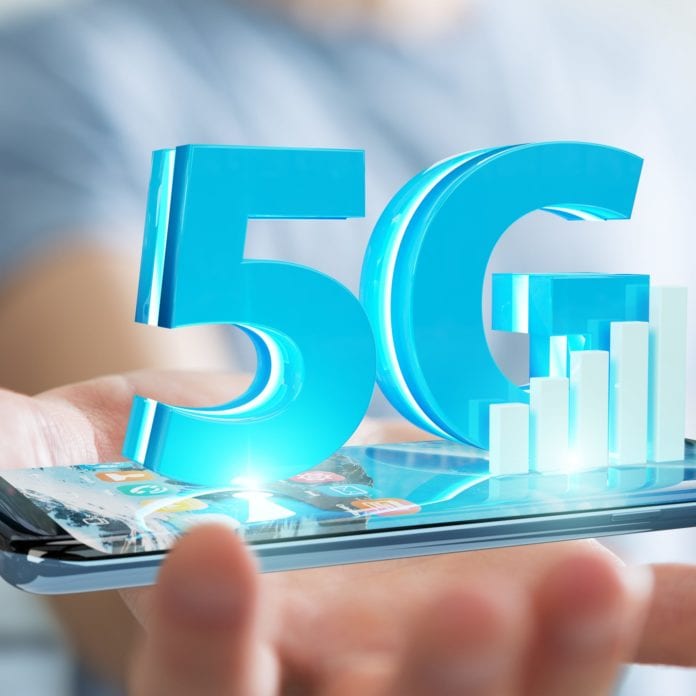5G is already triggering changes in user behavior and indoor coverage is very important to early adopters, according to a new user survey from Ericsson ConsumerLab. 5G users are often more satisfied with their experience than LTE users are, but they find the selection of 5G services and apps to be lacking, Ericsson found.
Ericsson ConsumerLab reported that 5G smartphone users consider indoor coverage as more important than either speed or battery life — twice as important, in fact. This is in part, Ericsson says, because early 5G adopters’ experience with 5G has largely taken place indoors, due to Covid-19-related lockdowns and travel restrictions.
Ericsson ConsumerLab’s study is based on nearly 31,000 online interviews with smartphone users between the ages of 15 and 69 years old, living across 26 markets around the world in markets both where 5G has been commercially launched, and where it has not. Of the total number of smartphone users, just over 4,000 were active 5G subscribers. Ericsson also conducted 44 in-depth interviews with 5G early adopters in New York City, London and Seoul, South Korea in early 2020 and also in early 2021.
This is the largest global 5G consumer study to date, the network equipment vendor claims, saying it is representative of 1.3 billion smartphone users around the world, including about 220 million 5G subscribers.
In terms of usage, early 5G adopters are spending, on average, two more hours each week on cloud gaming than LTE users, and one hour more per week on augmented reality apps. Overall, however, current 5G subscribers say that they’re dissatisfied with the new services and apps that are available for 5G and say that they are “willing to pay 20 to 30 percent more for 5G plans bundled with digital service use cases.”
5G is also displacing some Wi-Fi use, among those who have access to it: Ericsson found that 20% of 5G users said they reduced their Wi-Fi use after adopting 5G.
Among the other findings:
-Overall 5G adoption is still quite low, unsurprisingly: Ericsson ConsumerLab reported that in the 20 markets included in its survey that have 5G commercial networks, the average percentage of consumers who both own a 5G smartphone and have a 5G subscription is only 4%. That’s equal to the 4% who claim that they are on a 5G plan, but are using a 4G LTE smartphone. Meanwhile, 22% of smartphone users have already upgraded to a 5G-capable smartphone but don’t have a 5G plan to go along with it.
-There’s still quite a bit of confusion out there among 5G subscribers — or those who think they are. In China, Ericsson said, 5% of those surveyed say they have a 5G plan but a 4G phone. In the U.S., 14% of smartphone users who claimed to be “on 5G” but were using an LTE smartphone, and 12% who owned a 5G smartphone but said they had a 4G subscription. “This suggests a lingering confusion and knowledge gap among consumers around device capability and compatibility … [and] a lack of clarity on whether access to 5G is includedby default or requires a change of plan or a specific smartphone model,” the report concluded, as well as consumers confused by the differences between 5 GHz Wi-Fi and cellular 5G. “Marketing rhetoric that is heavy with tech jargon is limiting real
understanding of its value, device capabilities and offerings,” Ericsson added.
-While 39% of consumers expressed the intent to upgrade to 5G, the vendors says that based on its analysis, only about 21% of those are likely to happen this year, and the others are probably going to come in 2022 or later. But that still means the possibility of at least 300 million smartphone users around the world who could adopt 5G this year. If 5G commercial launches come to fruition in places like India, Brazil and Indonesia, that figure could be higher. Interestingly, the report also found that in markets like India and Indonesia, there is an existing installed device base of about 22% of smartphone users who already have 5G-ready phones.
-Customer satisfaction with 5G is generally reported as higher than with LTE. In the U.S., Ericsson found that 5G early adopters “seem to be more satisfied with 5G than smartphone users connected with 4G LTE.” The levels of satisfaction vary globally, though, and smartphone users in South Korea have particularly high expectations for their mobile service: Around half of surveyed consumers said they were dissatisfied with their indoor 5G coverage, and 27% reported being satisfied with their 5G experience compared to 31% who were satisfied with their LTE experience. Comparatively, in Switzerland, nearly 60% of users reported being “very satisfied” with 5G network performance, compared to only 30% who were very satisfied with LTE.
“Among smartphone users with 5G-ready smartphones and a 5G plan, across the 15 markets in our survey, we already see that an average of 10 percent more users are very satisfied with 5G, compared to those using 4G,” Ericsson concluded.

